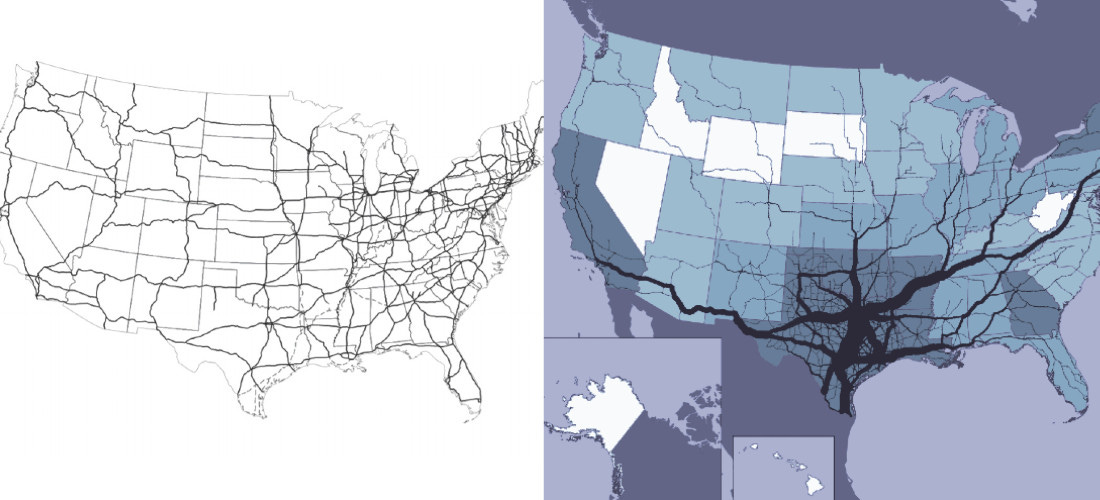Cities & DNA | thinkthinkthink #1
DNA is not a blueprint - how can we leverage that fact to build better cities + an amazing book on the history of Rome and three articles on evolution, Wuhan, and bitcoin.
“A city is more than a place in space, it is a drama in time.” - Patrick Geddes

In 2014 pharmaceutical giant Roche published an interactive map of metabolic pathways. First compiled in 1965 by Dr. Gerhard Michal, it provides a graphical overview of the most important biochemical pathways in one place. At its essence this is a map of processes - conveying metabolic connections at various scales. This elucidates an impending urban challenge: can we create a similar map of the interdependence of urban systems?
One could envision using such an urban systems map in a mix of top-down expert knowledge and bottom-up conditional planning. The following image is a comparison of the US Interstate Highway on the left, and Texas truck flows in 2010 on the right. We have complete knowledge of the interstate network (top-down), while it’s expression depends on how the commercial fleet makes use of it (bottom-up.)

In this sense urban planning cannot be interpreted as a finite process. Plans should not have an expiry date - they should be circular, continuous and responsive. Here’s a good analogy: DNA is not a top-down blueprint of the human body, but rather a multitude of bottom-up instructions and switches that express themselves when exposed to local signals and conditions.


A controlled but conditional expression of urban features can enable constant planning flexibility based on changing circumstances. Such an approach would transform an urban plan from a static document to a tended set of conditional rules which would express themselves based on a series of local factors.
One Book
SPQR: A history of ancient Rome by Mary Beard
A fantastic book which recounts the history of Rome from it's mythical beginnings to the end of the second century of the common era. It's as objective as possible an account of one thousand years of reign, political intrigue, war and culture. I believe it to be an example of how historians need to write history.
Three Links
Catastrophes and calms by Renée A Duckworth
On punctuated equilibrium and how we are primed by evolution to be resilient.
The Wuhan I Know by Laura Gao
An important photo essay on Wuhan by a young graphic artist.
How the Bitcoin Protocol actually works by Michael Nielsen
An self-explanatory scientific and yet fantastically clear piece of writing.
Five Tweets








This was the first issue of Think Think Think - a periodic newsletter by Joni Baboci on cities, science and complexity. If you liked it why not subscribe?
Thanks for reading; don't hesitate to reach out at dbaboci@gmail.com or @dbaboci.



